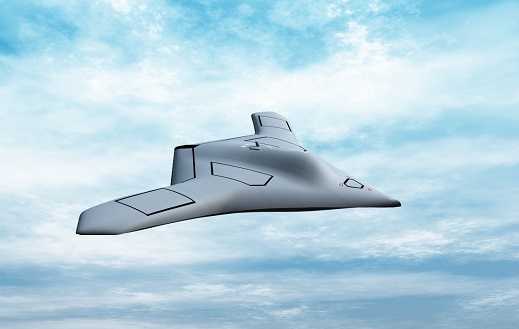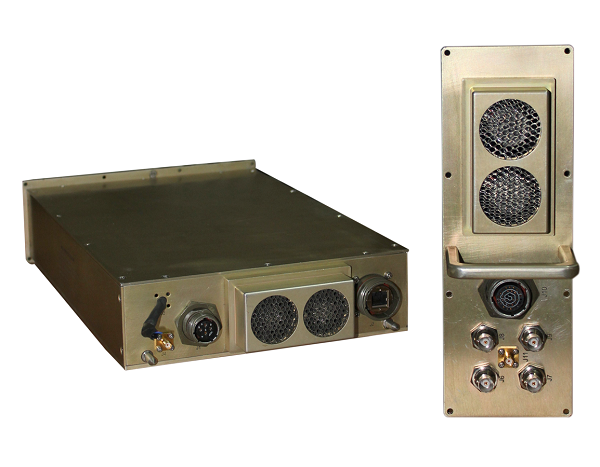VUHF Wideband and Microwave Receiver
Introduction
The V/UHF Wideband and Microwave Receiver is a signal interception, analysis and monitoring receiver subsystem typically used in COMINT (Communication Intelligence) applications. The receiver aims to detect, analyse and demodulate intercepted signals using the parameters gathered.
The unit operates in multiple modes:
Frequency Scan: Detection of active signals
Analysis: Analysis of active signal for determining various parameters like bandwidth, signal strength, modulation type, symbol rate etc.
Monitoring: Demodulation of active signal using the parameters identified during analysis.
Replay & BITE: Offline validation of system for accuracy and consistency
The Customer
A leading Defence Lab selected Mistral to design, build and integrate the V/UHF wideband and Microware Receiver for airborne applications. Mistral had to design the hardware enclosure and develop the OWS (Operator Workstation), Embedded Software, FPGA firmware. Mistral also had to integrate the receiver unit with third party sub-systems like the RF Unit and Clock Systems.
The Requirement
The customer’s requirement was to design and implement a solution for the V/UHF Wideband and Microwave Receiver that addressed their functional and performance criteria while adhering to the DO178B standards for embedded software development.
The customer’s requirements were;
- Building a compact mechanical enclosure to accommodate one 6U VME board with two PMC modules. The third party COTS VME board and PMC modules were supplied by the customer
- Design and implementation of audio codec interfaces integrated in the enclosure backplane.
- Design and implementation of Embedded Software distributed across the nodes of Quad PowerPC processor board. The software development to follow DO178B guidelines and documentation to follow MIL 498 standard.
- Development of wrapper logic for the Signal Analysis and Demodulator IP cores for Xilinx FPGAs.
- Design and implementation of OWS Application on MS Windows providing operator controls and report displays.
- Integrating the various units of receiver and other third party developed subsystems.
Solution Provided
Mistral is a professional design service provider with extensive experience in embedded hardware and software development for high-speed signal processing Mil – Aero applications.
The solution involved design, development and integration of units described below:
6U VME Enclosure 
- Ultra-compact design to accommodate one 6U VME card with two PMC modules (Enclosure Dimension Constraints: 65mm Height, 360mm Length with Connectors, 225mm Width).
- Approximate weight of 5 Kg, including all the electronics as mandated by the customer to keep the weight of the whole system including RF unit and the subsystem within the constraints.
- Modular approach for Integration so that the receiver unit could easily be mounted on the standard rack or enclosure.
- Designed to meet MIL-STD-810D and MIL–STD-461 D\E Standards for environmental considerations and EMI/EMC compliances.
Embedded Software
- Development Embedded software developed based on VxWorks for a Quad PowerPC COTS board.
- Embedded Software manages subsystem interfaces, PMC modules, Host interface, and a part of the high-speed signal processing operations.
- Embedded Software serves the requests from the Host, generates various reports and sends it to OWS over Gigabit Ethernet link.
- DO178B guidelines for software development and MIL498 standard documentation were followed.
FPGA firmware
- The COTS cards housed on PMC slots contained Xilinx FPGAs sharing signal processing operations. Mistral developed FPGA firmware to provide a wrapper logic for the customer supplied IP cores.
- The scope of FPGA firmware development also included logic to route the data between the PMC cards housed on the host board over the backplane at a high data rate.
OWS Application/GUI
- The GUI based OWS Application developed for MS Windows PC on VC++ framework provides operator controls and graphical, tabular and textual representation of the reports received from the system.
- The OWS Application provides options to select operations, analyze reports based on plots/report displays, log the data in hard drive for offline verifications etc.
- The features of OWS Application included various plots like spectrum and waterfall displays, graphs, diagrams like eye diagram and vector diagram, provisions for zoom in-zoom out, cursors-markers, record-replay etc.





